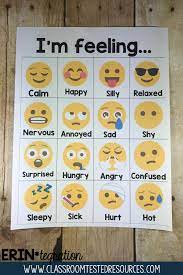Emojis have become a ubiquitous part of digital communication, providing a fun and engaging way to express emotions and convey messages. They can also be an innovative tool for teachers looking to enhance learning in the classroom. Here’s how educators can use emoji to hook their students on learning:
1. Emotional Check-ins: Start the day by asking students how they’re feeling, using emojis to express their emotions. This not only helps build emotional intelligence but allows students to communicate their feelings in a comfortable way.
2. React to Reading: While discussing a book or story, ask students to choose emojis that represent their feelings about the plot or characters. This can stimulate conversation and ensure that all students are actively engaged.
3. Summarize with Emojis: Challenge students to summarize a lesson or story using only emojis. This encourages them to think critically about the most important aspects and how best to represent them visually.
4. Feedback and Grading: Instead of traditional marks, use emojis to give feedback on assignments. A thumbs-up or star might indicate mastery, while a thinking face could suggest that there’s room for improvement.
5. Emoji Story Starters: Provide a string of emojis and have students write stories based on the sequence given. This exercise sparks creativity and gets them excited about writing.
6. Visual Vocabulary: Help students remember new words by associating them with an emoji. This mnemonic device can make vocabulary building more memorable and enjoyable.
7. Ice Breakers and Games: Use emojis as prompts for classroom games and icebreakers, such as “guess the emoji” where students have to identify phrases or concepts based on a series of emojis.
8. Instructions and Reminders: Simplify classroom instructions or reminders by incorporating relevant emojis. For example, an emoji of an ear next to instructions can emphasize the importance of listening carefully.
9. Social Media Projects: If you’re discussing social media literacy, have your students create posts or profiles utilizing emojis effectively as part of the content they generate.
10. Cultural Understanding: Educate students about how different cultures may interpret emojis differently, fostering discussions around cultural diversity and digital communication norms.
By integrating emojis into educational practices, teachers can enhance engagement, facilitate better communication, and provide a diverse range of opportunities for learning. It’s important for educators to ensure that these activities are inclusive and accessible for all learners, keeping in mind that interpretation of visuals like emojis can vary widely amongst individuals.





